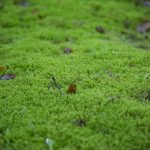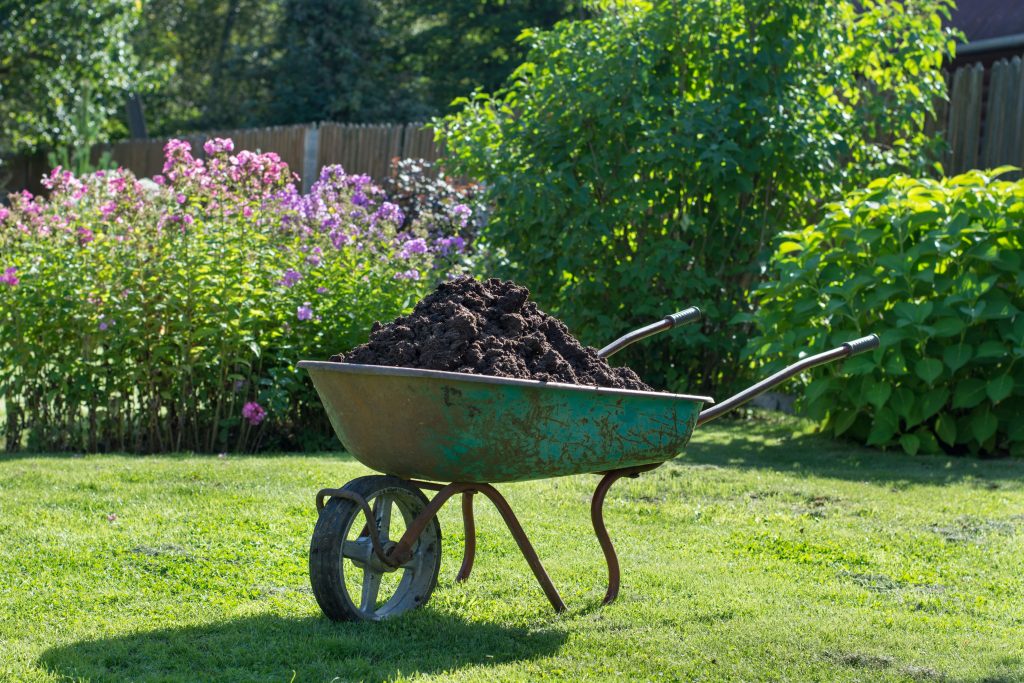If your lawn has a moss problem, you might be looking for a good way to get rid of the moss, once and for all.
In this guide, we’ll explain how to remove moss on your lawn. We’ll also explain how to prevent it from coming back, once you get rid of moss from your lawn.
What causes moss growth on lawns?
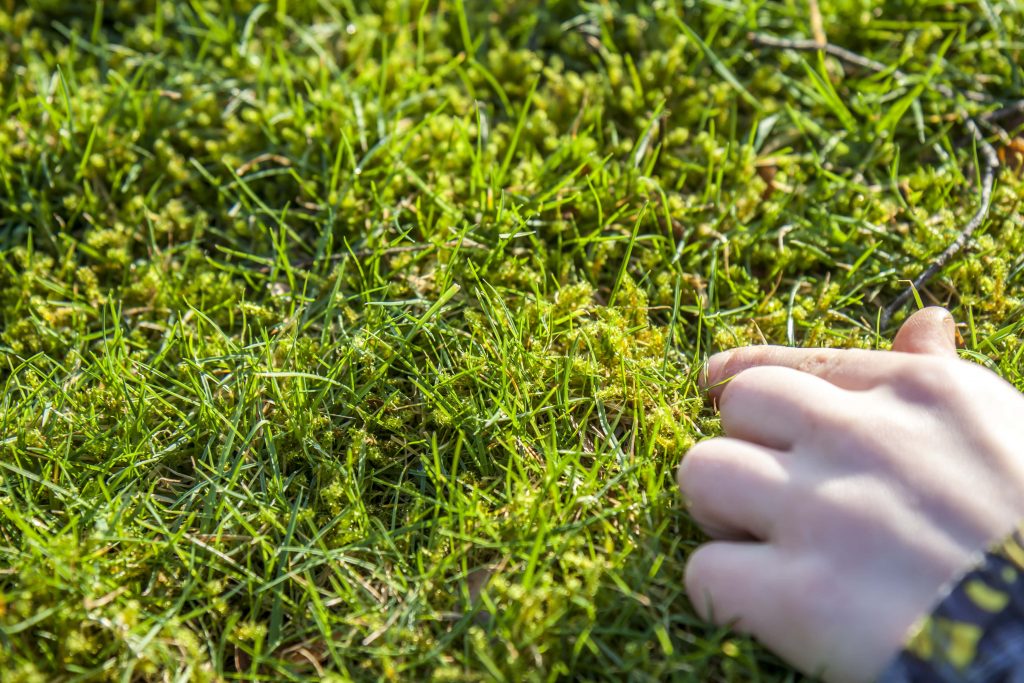
Moss thrives in cool, shady, moist conditions, especially poorly drained grass.
It also grows on less healthy lawns, especially worn-out turf, and areas of sparse, patchy grass. The less grass coverage, the easier it is for moss to take hold.
Also, moss often comes about when your soil pH is too low (too acidic), especially below a pH of 6, although it can also grow when your lawn is too alkaline (with a pH above 7).
Moss often grows in the spring or autumn, when the weather isn’t too hot, nor too cold.
How to remove moss on your lawn
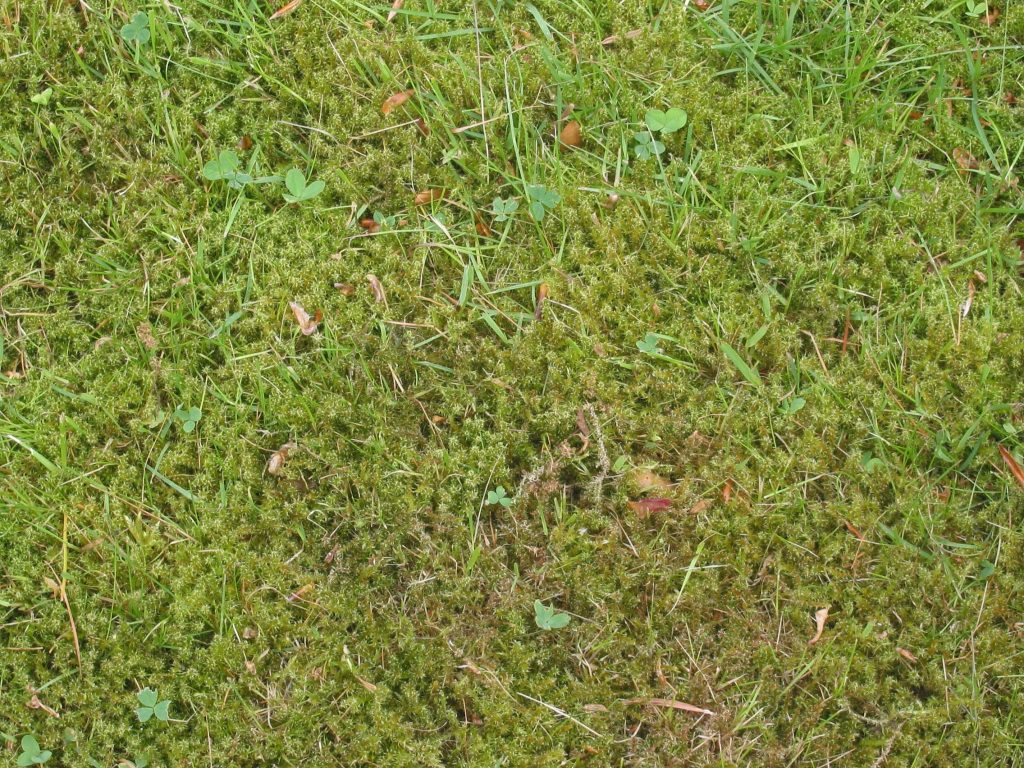
First, we’ll explain how to kill moss, so that you can remove it from your lawn more easily.
There are a few methods you can use to get rid of moss, including using a chemical moss killer, as well as more natural moss control methods.
Below, we’ve explained the different options to kill lawn moss.
1. Use a natural moss killer
There are a number of natural moss killing methods – the two best ones use either bicarbonate of soda or dish soap. These homemade techniques can be surprisingly effective at getting rid of moss, especially if your grass is otherwise quite healthy.
- If using baking soda, add three tablespoons to a litre of water. Mix the solution together, dissolving the baking soda, and add it to a spray bottle.
- If using dish soap, add 25mL to a litre of water, mix the dish soap into the liquid, and add it to a spray bottle.
Wait until the grass is completely dry, and you have no rain forecast for the next 24-48 hours. Then, no matter which method you have chosen, spray the liquid liberally over the moss on your lawn.
Wait around two weeks for the moss to die completely. If the moss still looks green after a few days, consider applying the solution again, with up to double the amount of baking soda or dish soap as before.
Once the moss has turned brown and died, it’s important to rake it away, and get rid of the dead moss. Then, you’ll need to use some of the methods we’ve discussed below to prevent the moss from returning to your lawn.
2. Use a chemical moss killer
For serious moss issues, you can use a chemical moss killer containing ferrous sulphate to get rid of moss.
With these ferrous sulphate substances, you simply spread it on your lawn, and wait for the moss to turn black or brown, which normally takes about two weeks. The fact that the dead moss changes colour helps to identify any patches of moss that you might have missed. Then, you can remove the moss, either using a spring tine rake, or a lawn scarifier.
The reason this works is the iron in ferrous sulphate draws all of the moisture out of the moss, even if the soil is wet. This kills the moss, but it can also kill the grass as well if you’re not careful. Always apply moss killer with caution, targeting areas of grass with a particular moss problem.
You can also buy lawn sand products, designed to help with moss control through their iron content. There are also moss control, weed killer and fertiliser blends, which help to kill moss as well as other garden weeds on your turf, and improve the health of your lawn.
These all-in-one mixes are normally spread onto the lawn with a spring tine rake, then you can wait two weeks and clear the dead moss from your lawn.
What time of year to treat moss
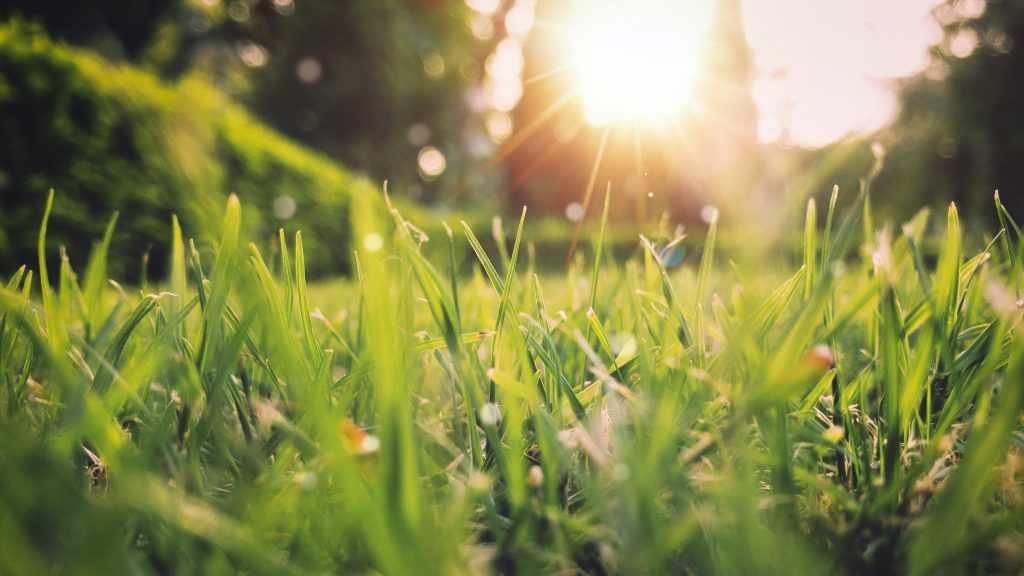
After choosing the best way to kill the moss on your lawn, you might be wondering when to use each method for the best results.
The most important thing is to ensure that your lawn is ready for a moss treatment. The last thing you want is to kill all the moss, only for it to be replaced with weeds because the grass isn’t able to recover quickly from the treatment.
A good time to rake away moss is in early April. At this time of year, the weather is warm enough for grass growth, and your moss shouldn’t have begun sporing yet, making it less likely to spread to more areas of the garden.
Prior to raking, you can apply your treatment (such as MossOff or a natural remedy) a week or two in advance, to kill the moss before raking it away.
If April has come and gone, you can also treat moss in early September, as long as your grass will have enough time to recover before the winter comes.
Also, try to avoid using a moss treatment for your grass when the weather is wet. Chances are, the rain will wash away the moss killer you have applied. Ideally, you want to have at least a few days and ideally a week or more of dry weather to give your solution the best chance of killing the moss.
Can I rake moss without killing it first?
You can choose to rake away moss from your lawn without using a treatment (such as ferrous sulphate or baking soda) to kill it first. However, it’s generally better to kill it first.
The benefits of killing the moss first are:
- It the raking process much easier – the moss is less thick, and there will be less of it.
- It reduces the likelihood of spreading the moss over other parts of your lawn.
- It makes it easier to identify moss. When it dies, moss turns from green to brown. If your moss is still bright green when raking, it’s easier to miss some moss patches.
How to prevent moss from returning to your lawn
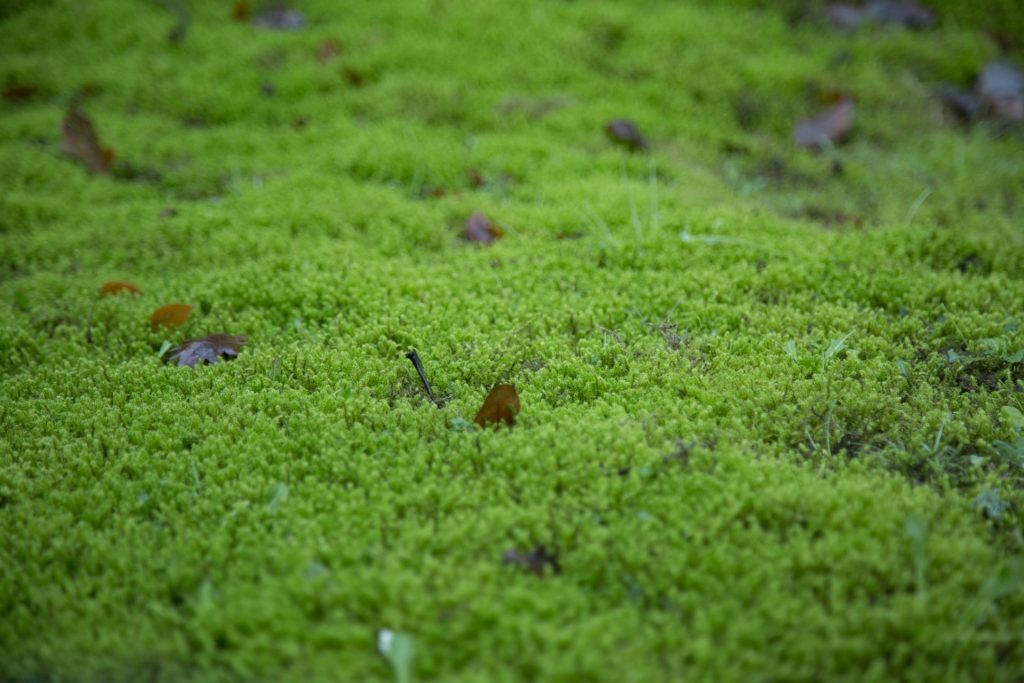
After you’ve spent the time and effort to kill moss and rake it off your lawn, the last thing you want is for it to come back to your grass.
Here are some tips you can use to prevent moss from growing on your lawn.
- If making your lawn moss free has left bare patches, overseed these areas with grass seed. You can learn more about the process of reseeding a lawn after killing moss by reading our guide on the subject.
- Try to get more light onto shady areas of your garden, especially where moss has taken hold. You might like to trim back trees, hedges, or other plants to help these shady patches get more sunlight, preventing lawn moss growth.
- Reduce the acidity of your soil. Moss thrives in very acidic soil, so you might like to increase your soil pH levels and reduce acidity by adding lime, such as by mixing in a small amount of ground limestone particles. After application, your soil may take up to a few months for its acidity to adjust.
- Feed your lawn with more nutrients, to help it grow stronger. You might like to use fertiliser, or mulch your grass clippings to give your lawn the nutrients it needs to be as healthy as possible.
- Try to improve drainage, especially in areas where moss growth has been a particular problem. Poor drainage can sometimes be fixed by aerating your grass, helping to give moisture more room to escape. This can also help to reduce compaction, helping your grass root system to breathe, and improving lawn health. You might also like to install a proper drain in your garden if you have a serious drainage problem.
- Try to keep on top of thatch issues as much as possible. When your lawn has too much thatch, this can reduce its health, making it easier for moss to take control.
In general, the best thing you can do to prevent moss from growing on your lawn is to have a solid lawn care strategy. You don’t need to spend hours each week working on your lawn, but by scarifying, adding fertiliser or mulch, and aerating when needed, you’ll be helping your lawn grow strong and remain moss-free for years to come.

I’m Josh, and I’m the head writer at Lawn Care Pro.
I love everything lawns, but I’m a bit of a lawn mower nerd. I spend a lot of my free time tinkering with mowers, and planning my mowing schedule for the next few weeks.
I’m also into cars, which comes in very helpful when servicing a mower engine!



